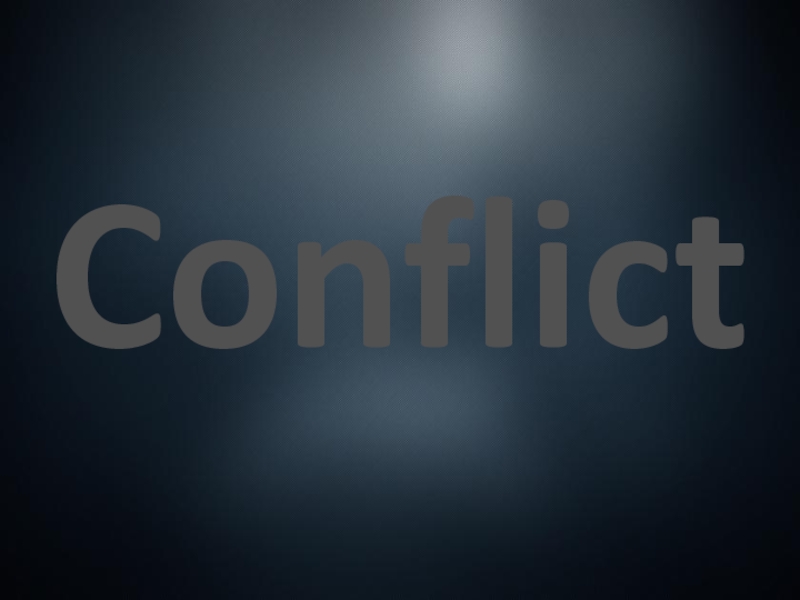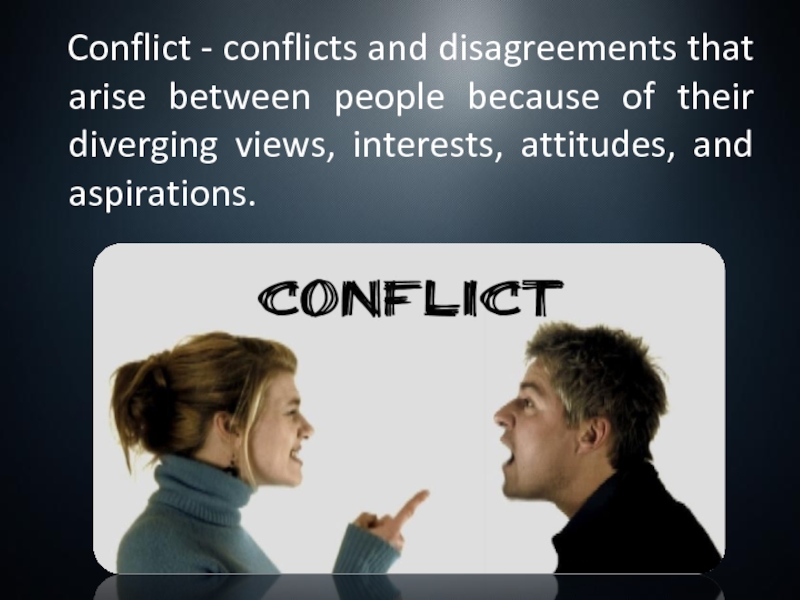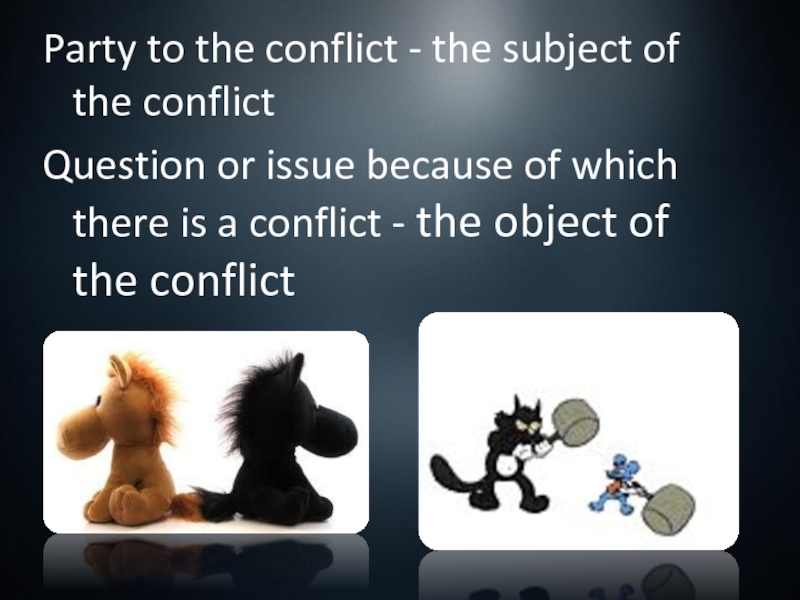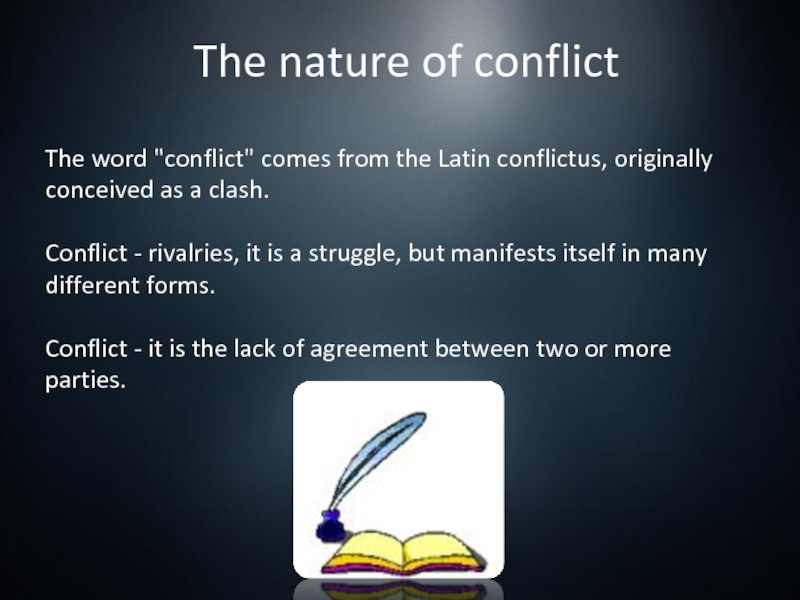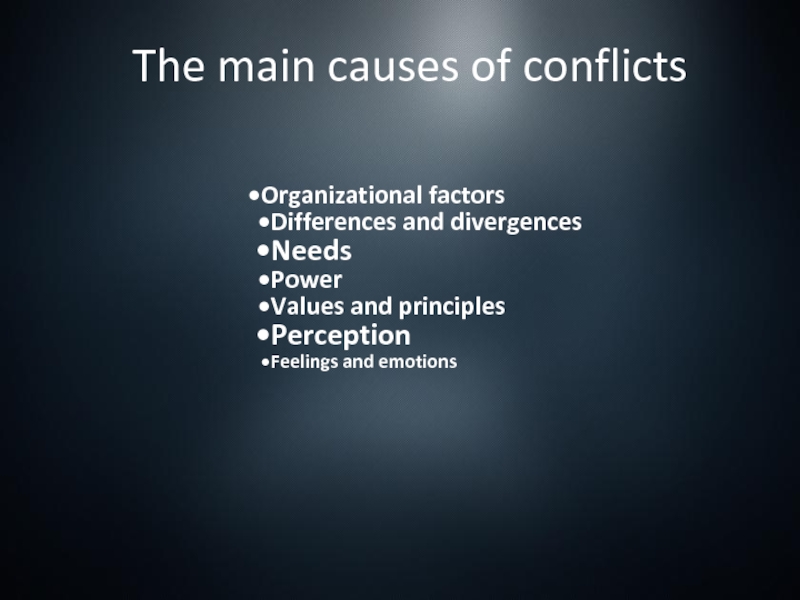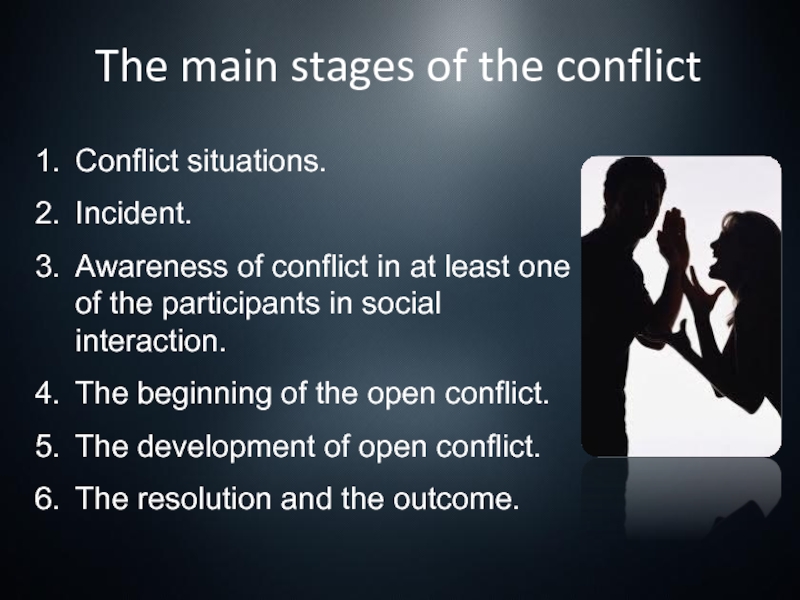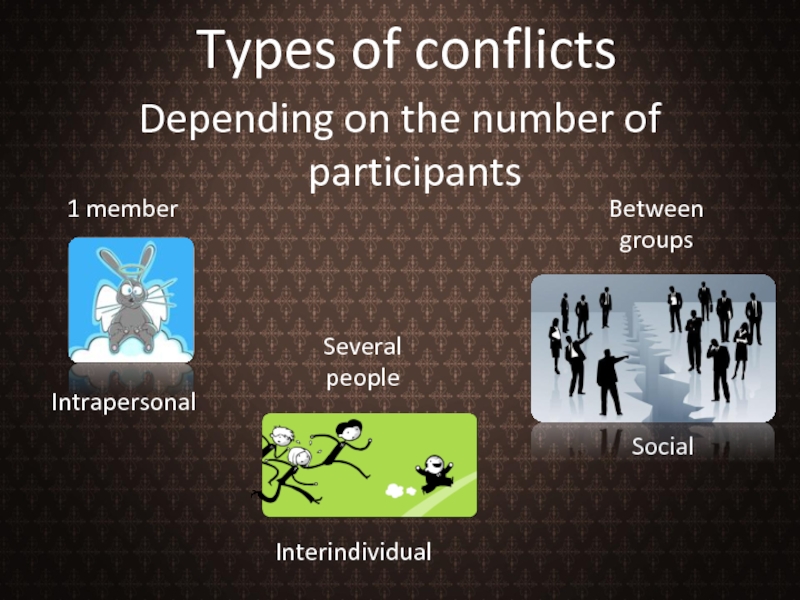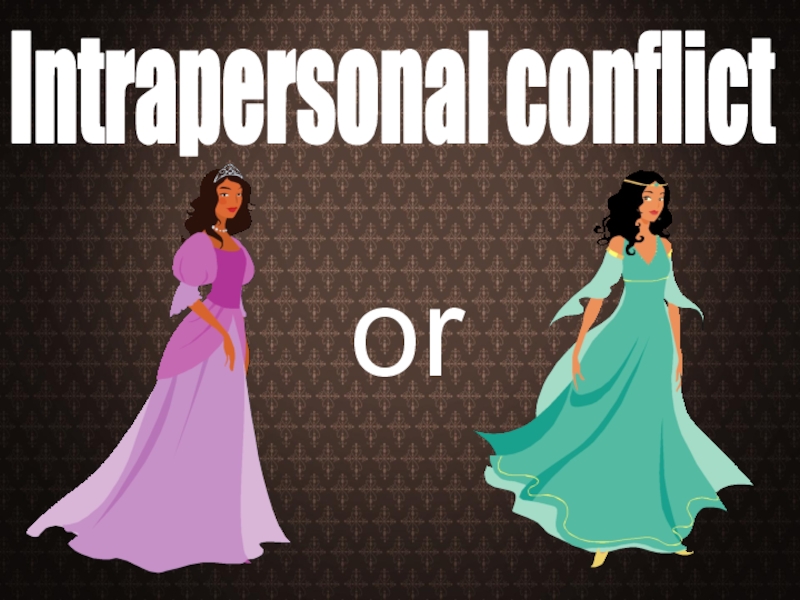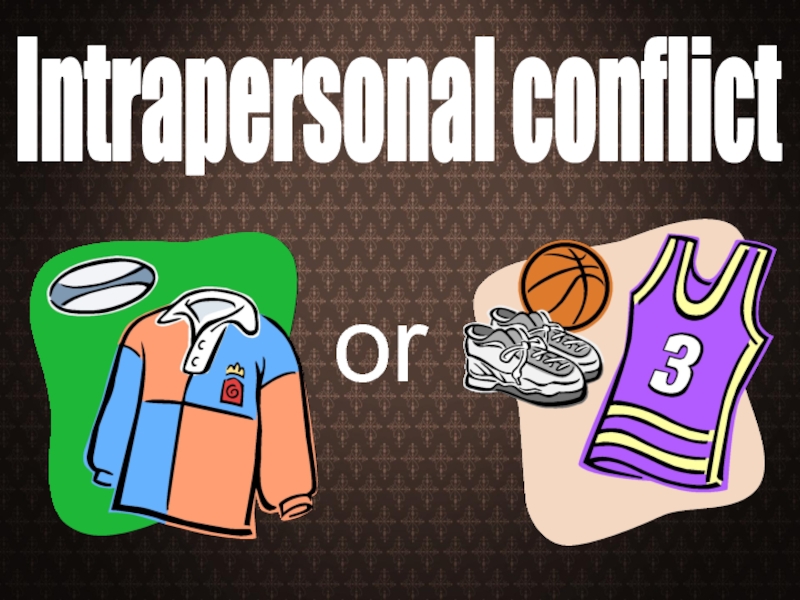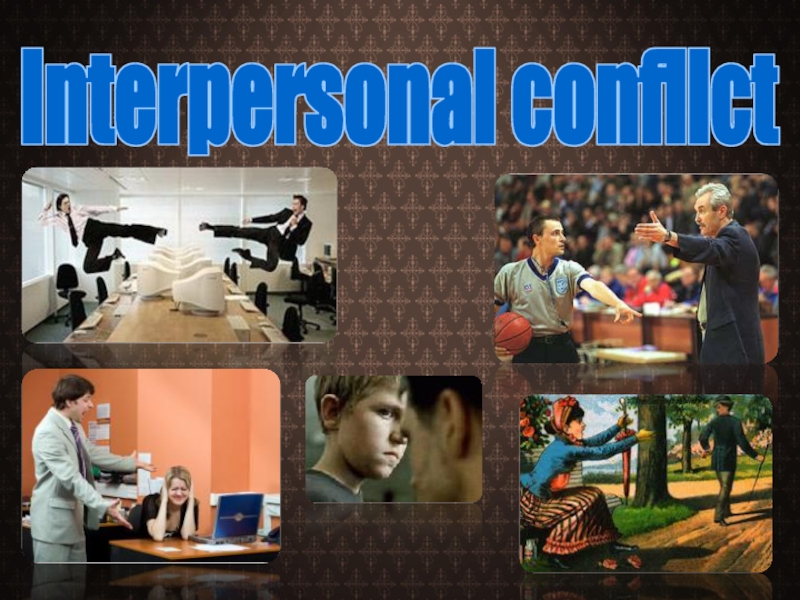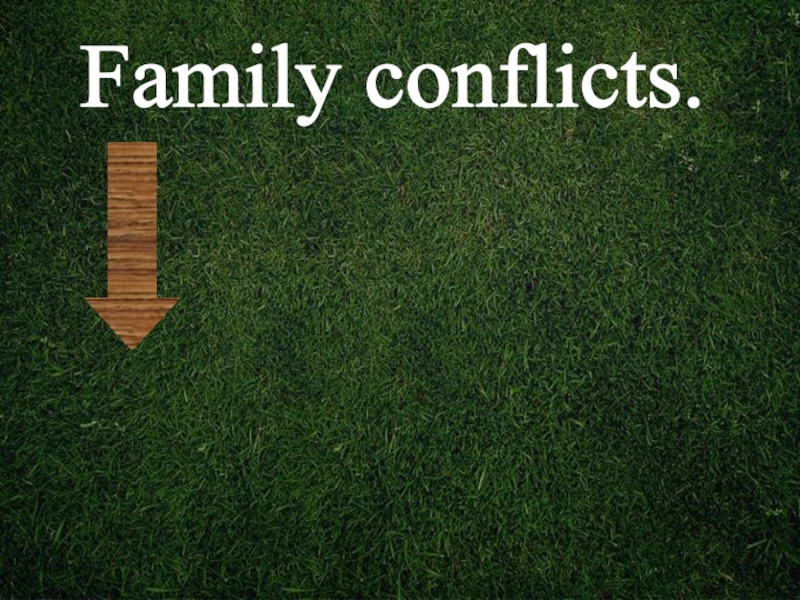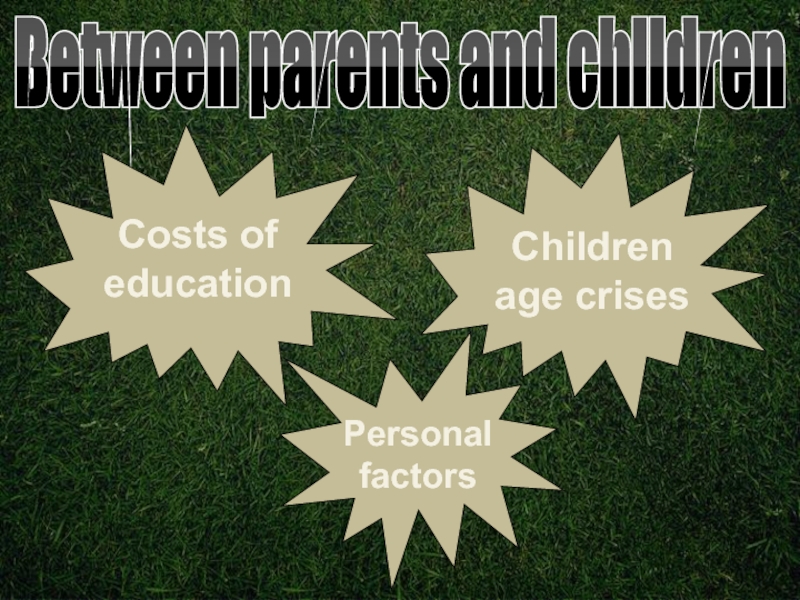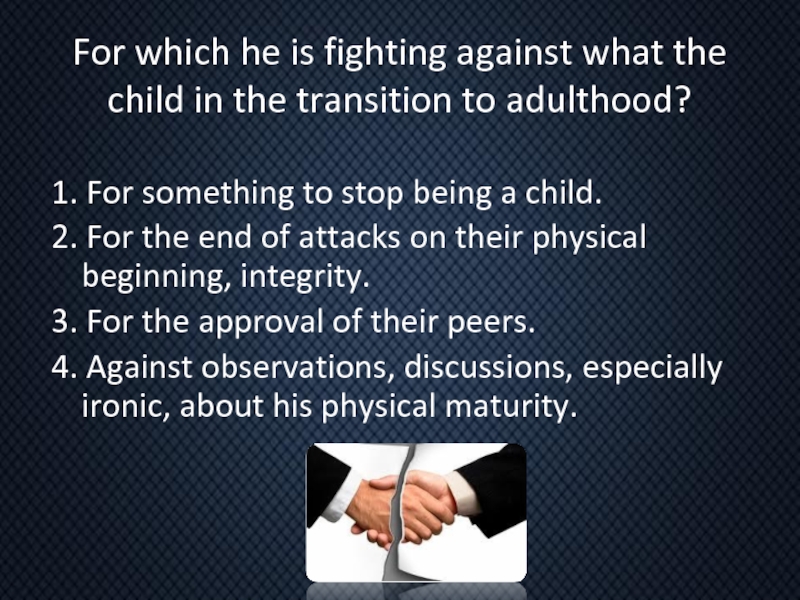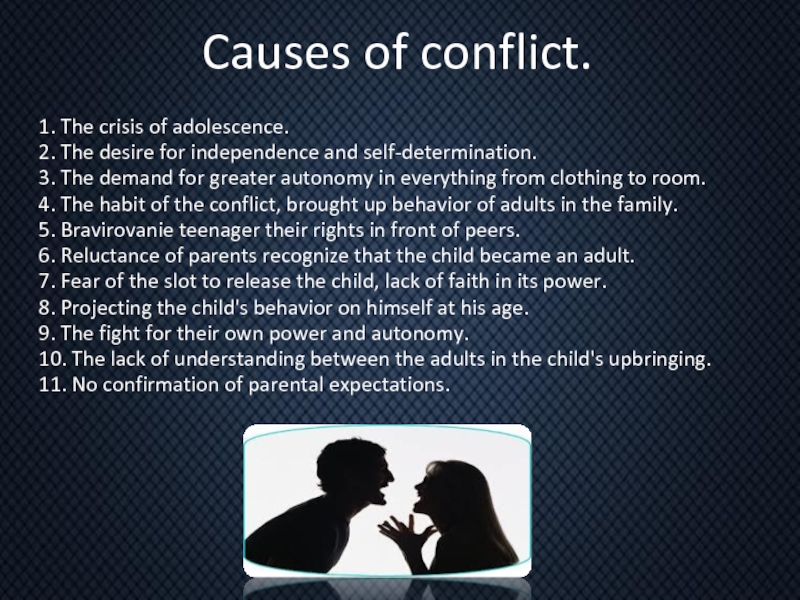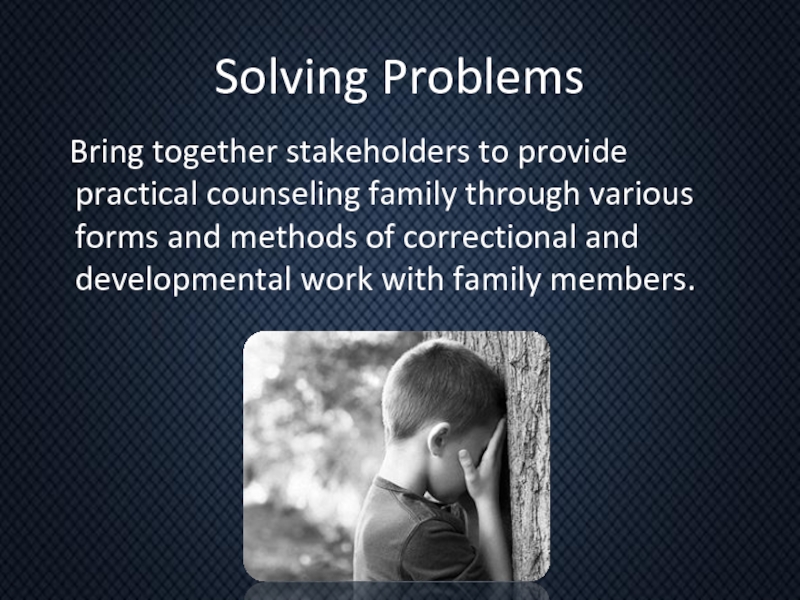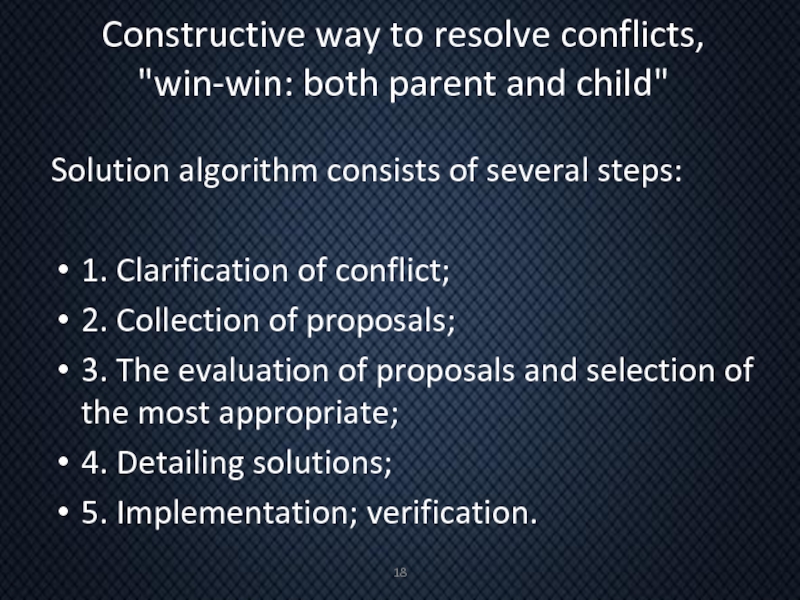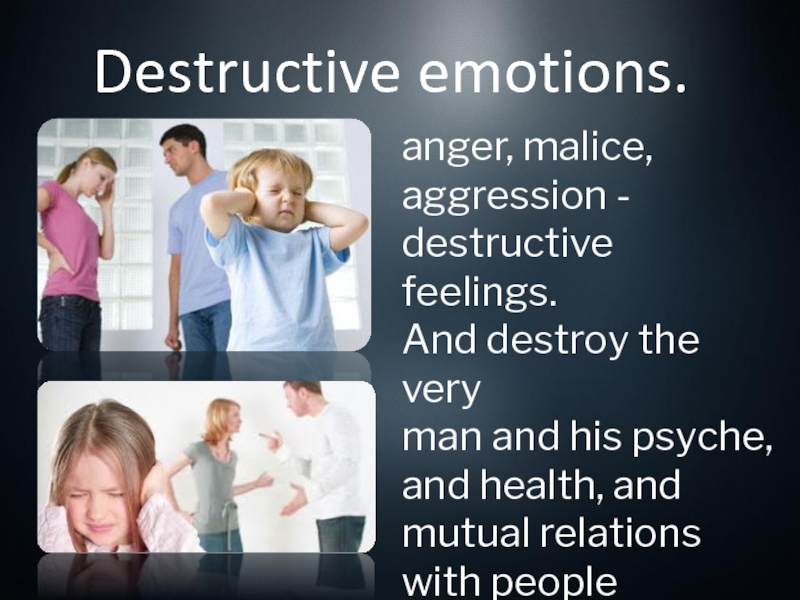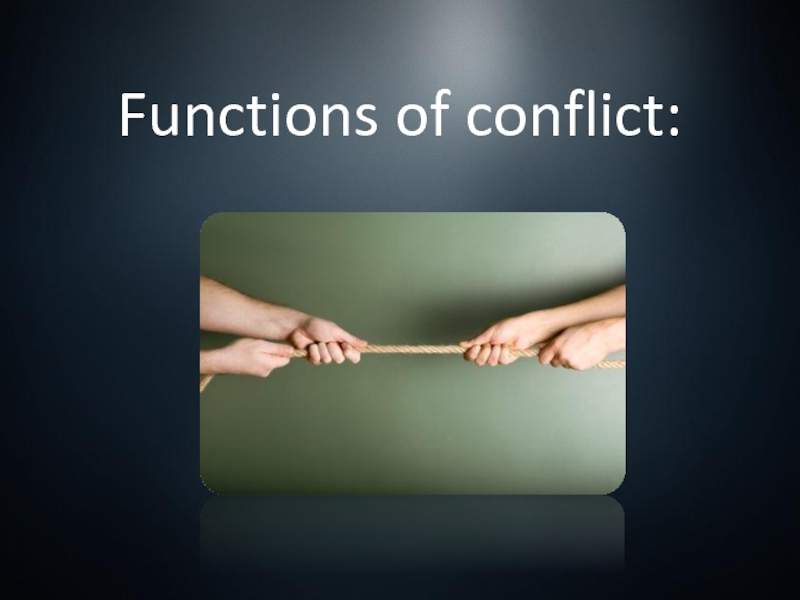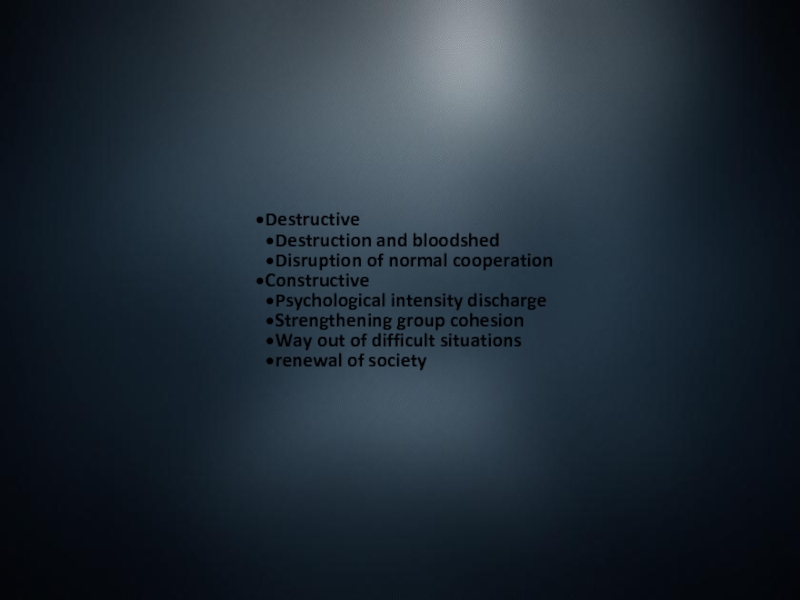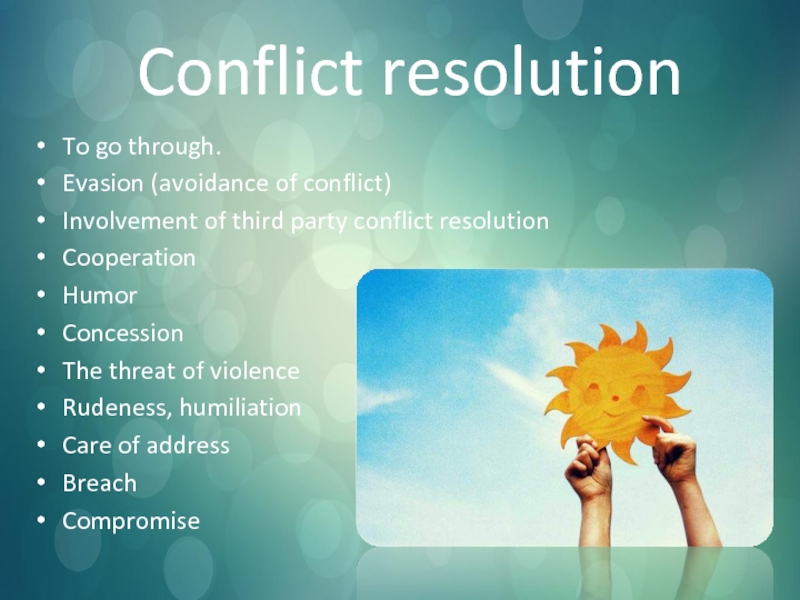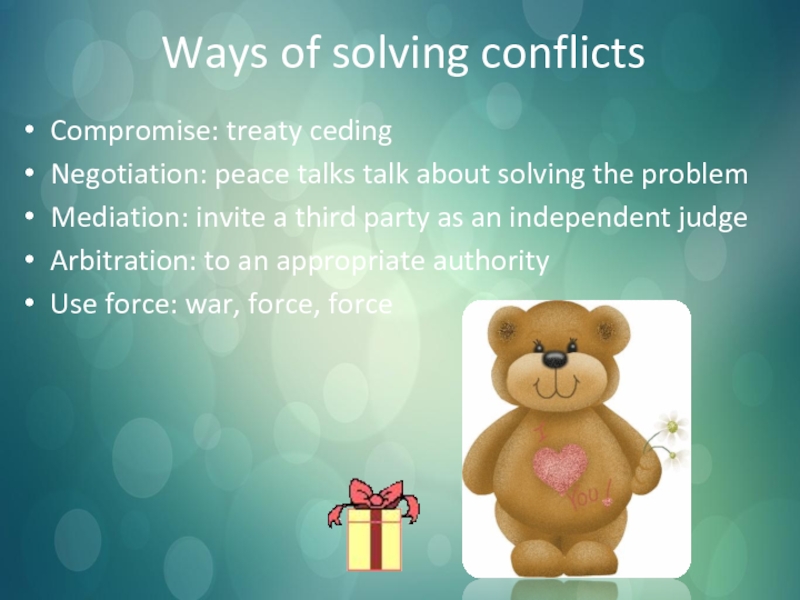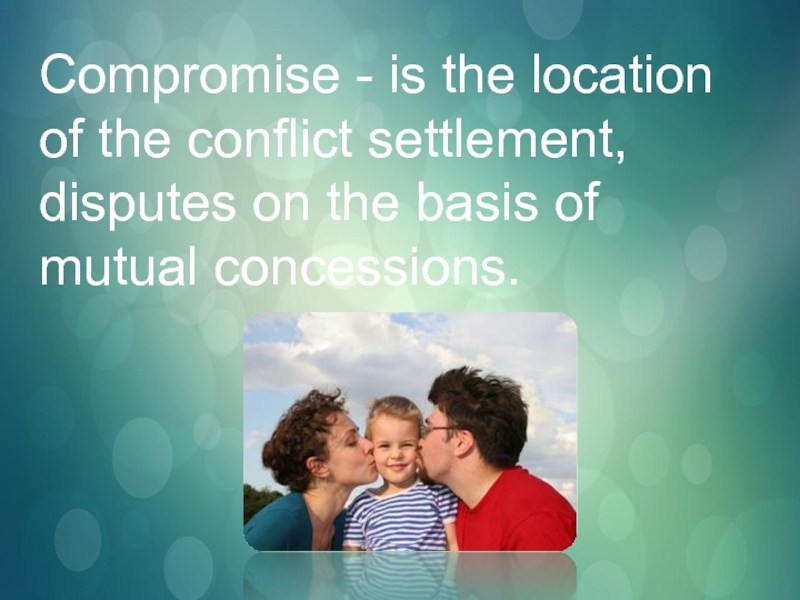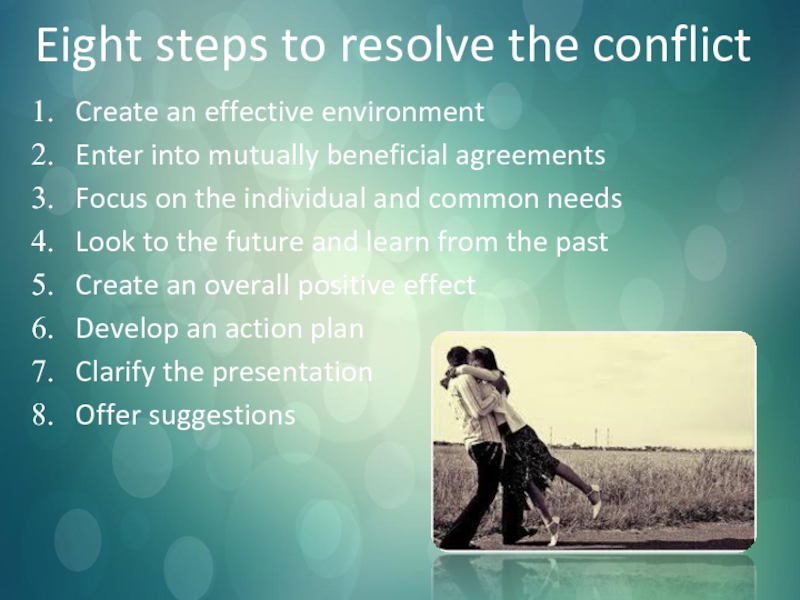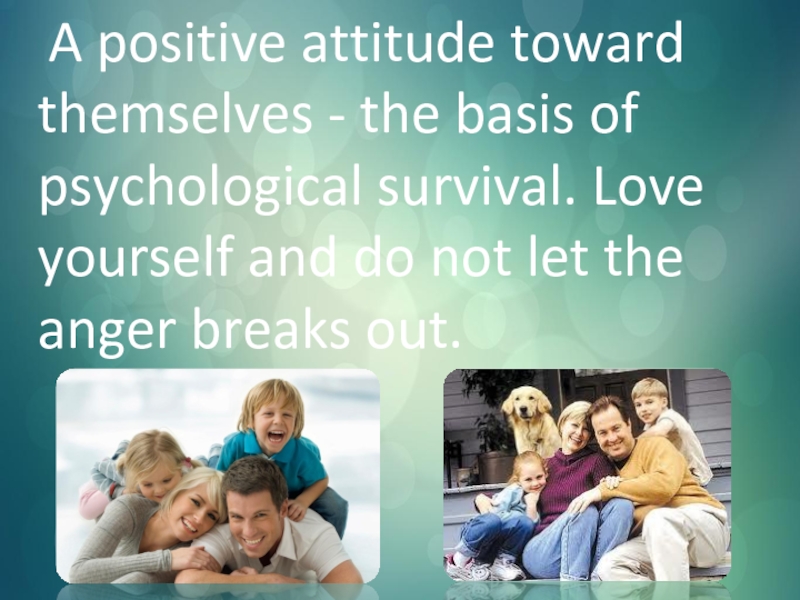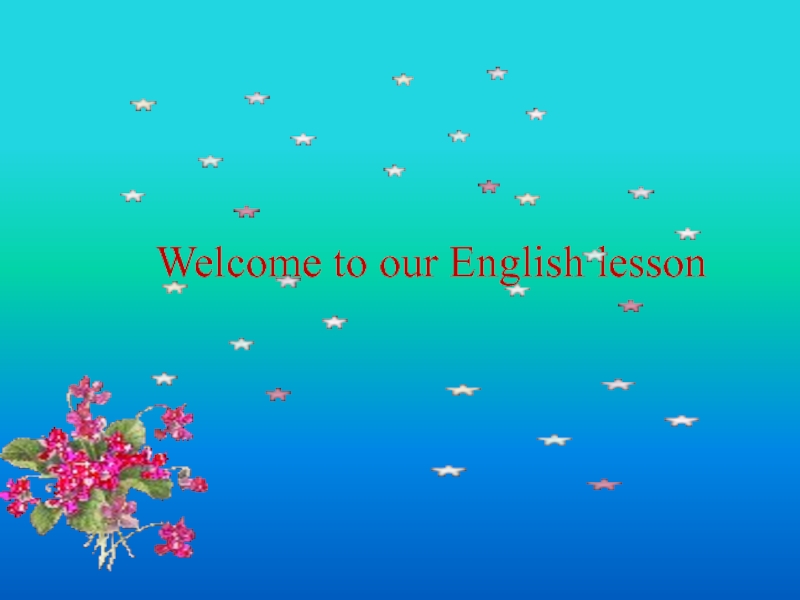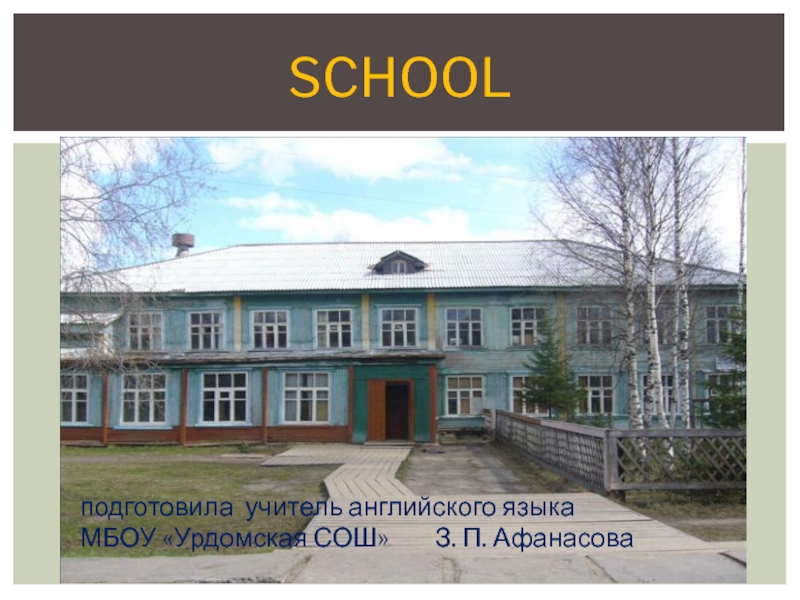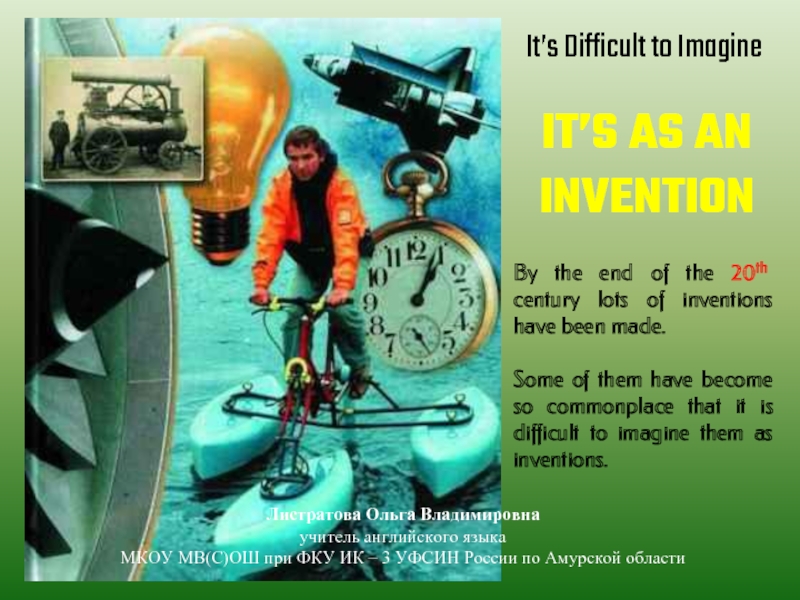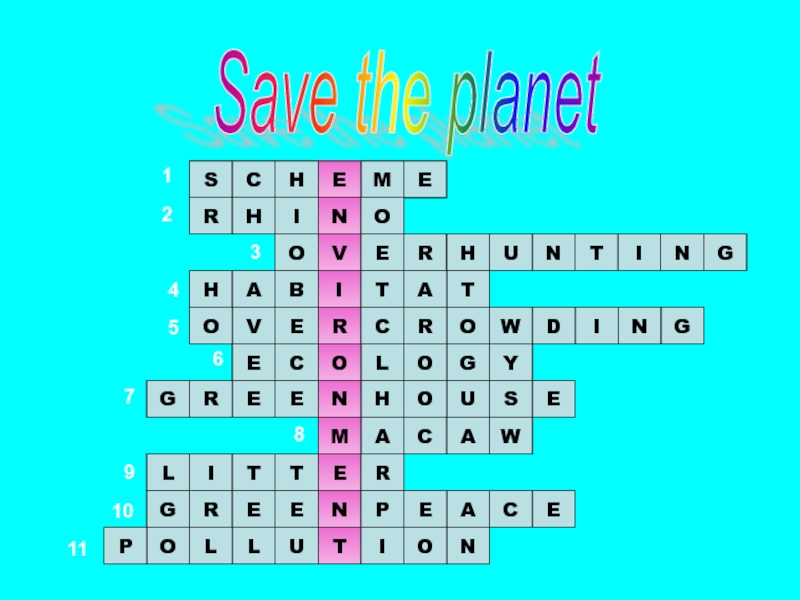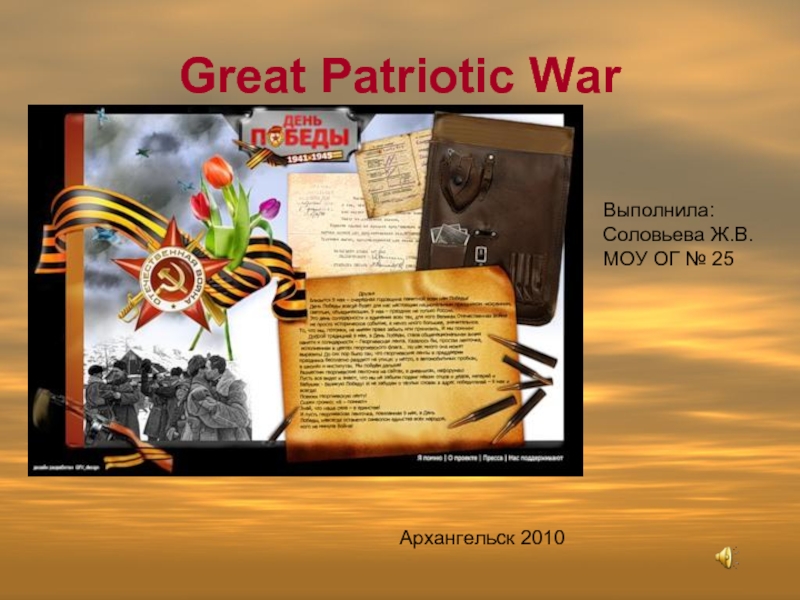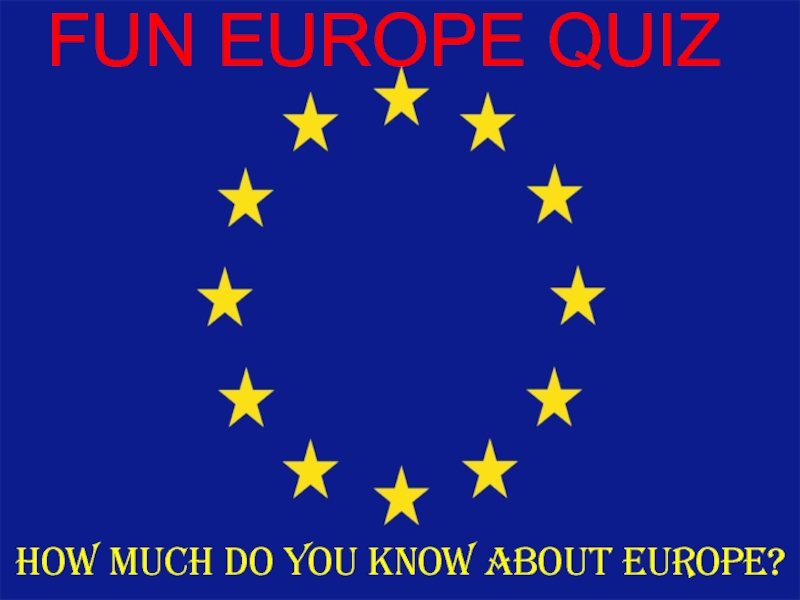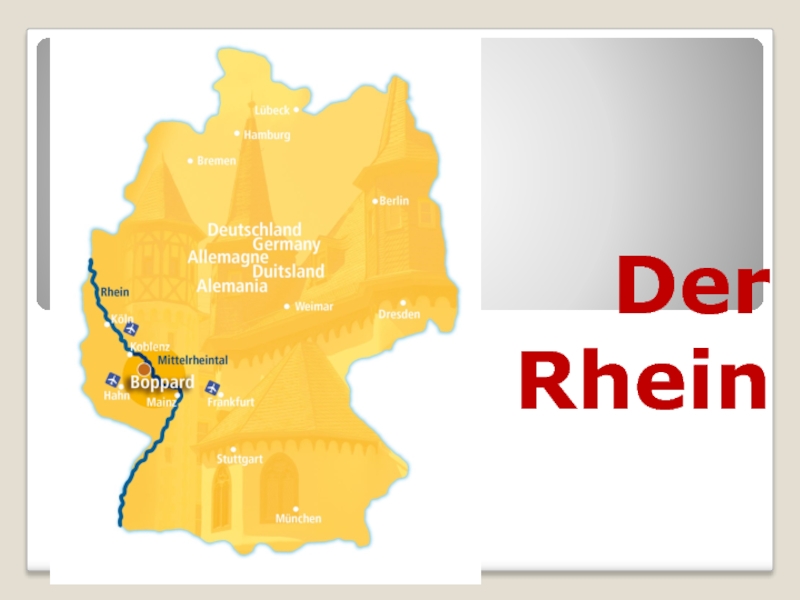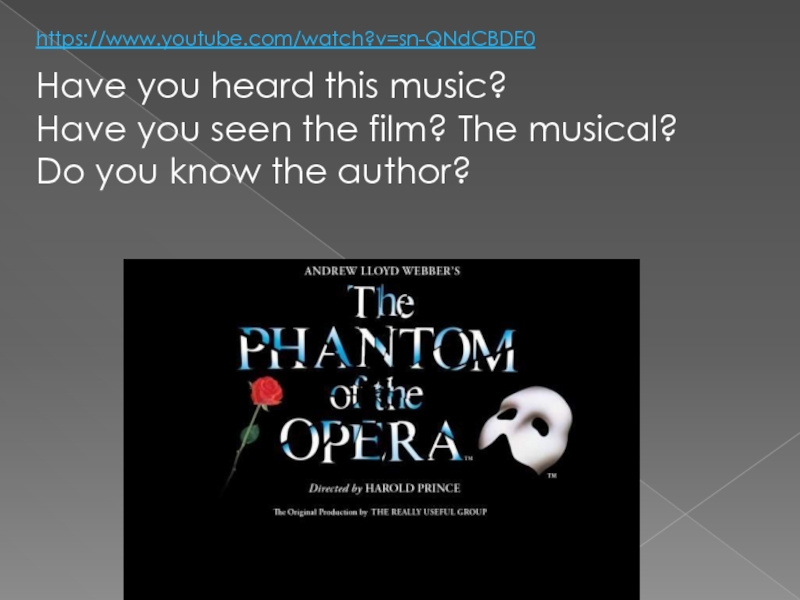Разделы презентаций
- Разное
- Английский язык
- Астрономия
- Алгебра
- Биология
- География
- Геометрия
- Детские презентации
- Информатика
- История
- Литература
- Математика
- Медицина
- Менеджмент
- Музыка
- МХК
- Немецкий язык
- ОБЖ
- Обществознание
- Окружающий мир
- Педагогика
- Русский язык
- Технология
- Физика
- Философия
- Химия
- Шаблоны, картинки для презентаций
- Экология
- Экономика
- Юриспруденция
Conflict
Содержание
- 1. Conflict
- 2. Conflict - conflicts and disagreements
- 3. Party to the conflict - the subject
- 4. The nature of conflictThe word "conflict" comes
- 5. The main causes of conflicts
- 6. Conflict situations.Incident.Awareness of conflict in at least
- 7. Incident - this set of circumstances, is a cause for conflict.
- 8. Types of conflictsDepending on the number of participants1 memberIntrapersonalSeveral peopleInterindividualBetween groupsSocial
- 9. Intrapersonal conflictor
- 10. Intrapersonal conflictor
- 11. Interpersonal conflict
- 12. Family conflicts.MarriedBetween parents and childrenRelated
- 13. RelatedThe intervention of relatives in family lives.
- 14. Between parents and childrenCosts of educationChildren age crisesPersonal factors
- 15. For which he is fighting against what
- 16. Causes of conflict.1. The crisis of adolescence.2.
- 17. Solving Problems Bring together stakeholders to
- 18. Constructive way to resolve conflicts, "win-win:
- 19. Destructive emotions.anger, malice, aggression -destructive feelings.And destroy
- 20. Functions of conflict:
- 21. Слайд 21
- 22. Conflict resolutionTo go through.Evasion (avoidance of conflict)Involvement
- 23. Ways of solving conflictsCompromise: treaty cedingNegotiation: peace
- 24. Compromise - is the location of the conflict settlement, disputes on the basis of mutual concessions.
- 25. Eight steps to resolve the conflictCreate an
- 26. A positive attitude toward themselves
- 27. There is nothing that shows the
- 28. "From love to hate one step,
- 29. By Yana Popova and Anna Vasko
- 30. Thanks for viewing.
- 31. Скачать презентанцию
Conflict - conflicts and disagreements that arise between people because of their diverging views, interests, attitudes, and aspirations.
Слайды и текст этой презентации
Слайд 2 Conflict - conflicts and disagreements that arise between
people because of their diverging views, interests, attitudes, and aspirations.
Слайд 3Party to the conflict - the subject of the conflict
Question
or issue because of which there is a conflict -
the object of the conflictСлайд 4The nature of conflict
The word "conflict" comes from the Latin
conflictus, originally conceived as a clash.
Conflict - rivalries, it is
a struggle, but manifests itself in many different forms.Conflict - it is the lack of agreement between two or more parties.
Слайд 6Conflict situations.
Incident.
Awareness of conflict in at least one of the
participants in social interaction.
The beginning of the open conflict.
The development
of open conflict.The resolution and the outcome.
The main stages of the conflict
Слайд 8Types of conflicts
Depending on the number of participants
1 member
Intrapersonal
Several people
Interindividual
Between
groups
Social
Слайд 15For which he is fighting against what the child in
the transition to adulthood?
1. For something to stop being a
child.2. For the end of attacks on their physical beginning, integrity.
3. For the approval of their peers.
4. Against observations, discussions, especially ironic, about his physical maturity.
Слайд 16Causes of conflict.
1. The crisis of adolescence.
2. The desire for
independence and self-determination.
3. The demand for greater autonomy in everything
from clothing to room.4. The habit of the conflict, brought up behavior of adults in the family.
5. Bravirovanie teenager their rights in front of peers.
6. Reluctance of parents recognize that the child became an adult.
7. Fear of the slot to release the child, lack of faith in its power.
8. Projecting the child's behavior on himself at his age.
9. The fight for their own power and autonomy.
10. The lack of understanding between the adults in the child's upbringing.
11. No confirmation of parental expectations.
Слайд 17Solving Problems
Bring together stakeholders to provide practical
counseling family through various forms and methods of correctional and
developmental work with family members.Слайд 18Constructive way to resolve conflicts, "win-win: both parent and child"
Solution algorithm consists of several steps:
1. Clarification of conflict;
2. Collection
of proposals;3. The evaluation of proposals and selection of the most appropriate;
4. Detailing solutions;
5. Implementation; verification.
Слайд 19Destructive emotions.
anger, malice, aggression -
destructive feelings.
And destroy the very
man and
his psyche,
and health, and mutual relations with people
Слайд 22Conflict resolution
To go through.
Evasion (avoidance of conflict)
Involvement of third party
conflict resolution
Cooperation
Humor
Concession
The threat of violence
Rudeness, humiliation
Care of address
Breach
Compromise
Слайд 23Ways of solving conflicts
Compromise: treaty ceding
Negotiation: peace talks talk about
solving the problem
Mediation: invite a third party as an independent
judgeArbitration: to an appropriate authority
Use force: war, force, force
Слайд 24Compromise - is the location of the conflict settlement, disputes
on the basis of mutual concessions.
Слайд 25Eight steps to resolve the conflict
Create an effective environment
Enter into
mutually beneficial agreements
Focus on the individual and common needs
Look to
the future and learn from the pastCreate an overall positive effect
Develop an action plan
Clarify the presentation
Offer suggestions
Слайд 26 A positive attitude toward themselves - the basis
of psychological survival. Love yourself and do not let the
anger breaks out.Слайд 27 There is nothing that shows the superiority of character
as good behavior in a quarrel, which can not be
avoided.Henry Taylor
